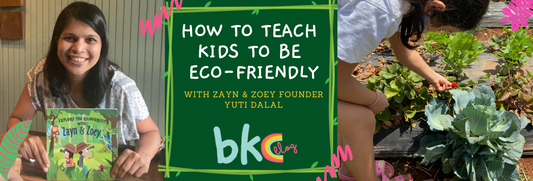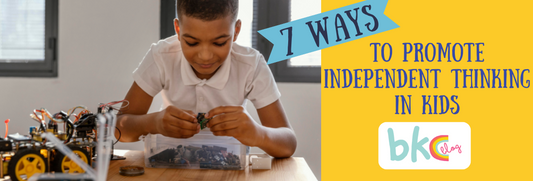When your child starts to read, it’s an exciting step towards building their own independent creative space. However, more often than not, children encounter several teething problems at the start of this journey. Here are some ways you can guide your child through their learning process.

While some children may begin reading as young as three, most usually start getting comfortable with reading and comprehension around the ages of six and seven. However, if your child is in first grade and you’re concerned that they’re falling behind, then know that almost 40% of children struggle with reading. So if your child is having a difficult time getting through a page, don’t worry. It isn’t unusual and there are plenty of ways to help your child.
And while it may not be an anomaly, it is important to seek support from qualified specialists as soon as you can. Research shows 95% of children who struggle with reading can reach their grade level if they receive specialised assistance. Many parents wait up to a year, which can have long-term effects.

Literacy expert Margie Gillis, Ed.D, explains, “Learning to read… is a cultural invention. Our brains don’t just come with that wiring. And it’s relatively recent, five thousand years, that we’ve had a system that represents spoken language. So we have to use areas of the brain, left hemisphere, that are really wired for humans to acquire language. And we have to build a neural-circuitry to be able to skillfully… and effortlessly, pull words off the page while making meaning. And for some children that is just a very difficult thing to do. It has nothing to do with intelligence… and skilled reading instruction will address those neurobiological differences.”
5 Ways to Help Your Child Overcome Difficulties With Reading
If your child is not able to match the reading levels of their peers, no matter: remember that everyone learns at their own pace. Here are some activities and practices you could adopt to help your child gain confidence and grow comfortable with reading. Through this process, remember to keep encouraging and praising your child’s effort and hard work. To know more about the effectiveness of praising a child, check out this blog.
1. Set a Routine for Reading
For your child to consistently improve their reading skills, setting a routine is crucial. The aim should be to help them develop a habit of reading for at least a few minutes everyday till they start looking forward to their reading time on their own. Try and make this reading time as enjoyable as possible. You could go for the classic bedtime reading. If your child is attempting to read on their own, then join them with your own book to set an example.

To make time for a reading routine, you may have to parallelly work towards limiting your child’s screen time. (Read more on how.) Reading, especially for those learning to engage with this medium, is an activity that provides tremendous yet delayed gratification. Activities associated with devices, whether that be playing a game or watching movies, operate on instant gratification, which without regulation can set harmful precedents for a child.
Some books you can offer your child are Eek! Halloween!, Big Box of Boynton Set 2, The Hippo Who Came to Swim, and Samara and Alphabet: Saving the Birds.
2. Select Books Within Your Child’s Reading Level
For a child who is struggling with reading, it is important to not discourage them by pushing them to read books they are not yet ready for. Offer them books that match their current reading level.
When they are on their own, select books that they can read comfortably and only challenge them a little outside their comfort zone. Use the five-finger rule when gauging a book’s suitability for your child’s reading level. Every time your child comes across a word they are unable to read, ask them to hold up one finger. If they have all five fingers up while reading a single page, the book is likely too advanced for their current level.
When you’re reading with your child, you can go for books that are more difficult and patiently guide them with the words they are struggling with or have not encountered yet.
3. Teach Through Sound
Start with what you know; in this case, what your child knows. Even when you’re simply going about your day at home or outside with your child, sound out words from your environment. You can make a fun game out of it – for instance, name as many colours as you can from the objects around you. If you’re looking for books to guide this process, try First Illustrated English Dictionary, Which Season Is it?, and Wonderful Words: At Home!.

Don’t neglect phonics, which is the process of teaching children to correlate individual sounds with their corresponding letters or letter groups. One way of practising this is to segment words by sounding out the sound of each letter and then blending those sounds into words. For example, the word “pat” can be segmented into P-A-T and then the sounds can be blended to form PAT. By practising hearing, identifying, and manipulating sounds, it will become easier for your child to work out how to pronounce new words they come across. An excellent book to familiarise your child with the shape and sound of letters is Usborne’s Fingertail ABC.
If possible you can invest in a few books in both their printed and audio versions. It can be immensely helpful for your child to follow the story in the printed version while listening to the audiobooks. You could also aid the reading process with these wipe-and-clean writing-practice books called High-Frequency Words and My First Writing Book Dinosaurs, which will encourage your child to simply start again after making a mistake.
4. Build Your Child’s Comprehension Skills
Reading isn’t simply an act of sounding out words. It’s about deriving meaning from the shapes (i.e. letters) on the page. Even if your child may be comfortable with recognising letters by their sound and form words, they may still be struggling with comprehending the meaning of the words they’re reading.
To help your child with their comprehension skills, pick up books about subjects that interest your child and are familiar to them, so they feel some degree of confidence from the get go. Before you start reading the book with your child, just spend some time flipping through them first, and discussing what they might be about and how the storyline could develop simply by interpreting the pictures. Build some excitement and wonder about what they might encounter and learn while reading the book.

While reading, encourage your child to follow along the page with their forefinger. Make note of words that are too difficult so you can revisit them later. At the end of your reading session, take a few moments to recount what you read. Encourage your child to take the lead but step in if they’re starting to feel frustrated.
5. Match Your Child’s Pace
Learning to read takes patience, both for the learner and their teacher. If your child wants to read the same books over and over again, let them. While you may worry that they are not getting exposed to new material, the truth is, repetition helps! When you’re reading together, take turns to read aloud, so your child gets practice, while also learning the right pronunciations from you.
Giving the right kind of support at the right time will help your child not only progress but also learn to enjoy reading. It’s important to remind your child and yourself that this has nothing to do with their intellectual capabilities, nor is it anyone’s fault.
Even when your child may be feeling disheartened and you, distressed, remind yourselves that with patience and practise your child can become a proficient reader. To find out ways to encourage your child to become an avid reader, check out this blog!





